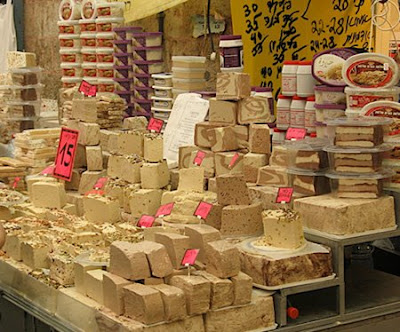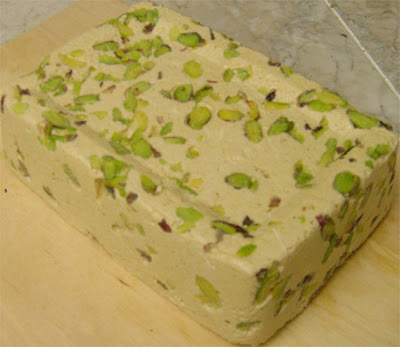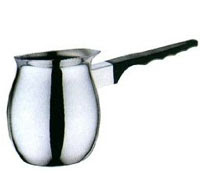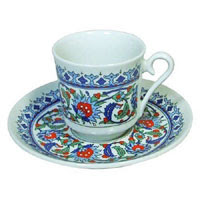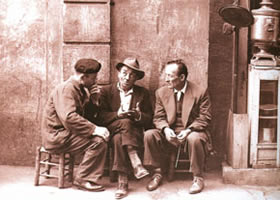Women's rights as human rights are now recognized worldwide after a long, hard struggle process. This struggle has naturally other dimensions in each country.
The Turkish woman is in a relatively fortunate position. Because of state founder Ataturk personally appreciated the importance of the Turkish woman for the high society and wanted her to help the rights to it by their deserve her being female. Ataturk because of his own wife image of the Turkish woman assigned to their place.
Ataturk realized a series of reforms, which he a modern, democratic and secular society instead of the theocratic Ottoman wanted to create order. In the education system were including education for boys and girls in mixed classes taken.
The Turkish woman has today practically all economic, political and social rights, because of laws. But one must ask whether the women 49,33% (percentage of the population according to the census of 1990) of their rights and exercise. These arise between the women in the countryside and in the city some differences. The city woman has largely achieved the economic independent. But it is hard to assume the same theory for village and country side women, mostly from the less educated population. These women depend on their husbands economically.
Sociological studies say that, The ladies which are employers in the cities were dealing with the important issues arising from the role of Turkish women in today's society.
Most urban women, and especially since the younger generation see themselves as the man standing on an equal footing.
The Turkish women in Manufacturing In Article 49 of the Constitution of 1982, every citizen, without distinction of sex were having the rights to work attributed. Today, all sectors of the labor market is opened for the Turkish woman .
That the Turkish woman stepping outside of their houses at the building of the society participates, is a result of the reforms of Atatürk. Because of equal opportunities in education, the successful women in various professions can prove.
The Turkish woman has in social life, especially initially participated as a teacher. Followed by the other professions. Today, the Turk as Voters and taxpayers in appearance, as a user of transport and as a parent of a school child, before the court as a plaintiff, defendant and witness, as a consumer of all kinds of services and active in various social associations.
According to the results of the last census are 44.95% of all women over 12 years employed, ie, about half of the women of Turkey is involved in the producing force of the country involved. Although this percentage is still too low, but with the increase in the education levels of women in working life will increase. Other hand, are not among the working women several housewives who, although they have an education do not exercise their profession for various reasons.
The fact is also that the socio-economic development of the professions of women broader fan. The breakdown by professions provides for the Turkish woman today is:
* Scientists and technicians
* Clear and self-Makers
* Senior administrative staff
* Trading and sales staff
* Entrepreneurs
* Directors, high officials and diplomats Item
* Production outside of agriculture
* Agriculture, livestock and forestry
The manufacture at the participating women work to a large percentage of agriculture and forestry and livestock. But with the ongoing industrialization of Turkey grows, the percentage of women who work outside of agriculture are employed.
The city women with a higher educational level than the rural women have to participate in the course of time into ever greater extent on the production. As an example, stated that 1970 2.6% of women scientists and technicians worked, 1985 but 4.9%. And as a senior administrative personnel, there were 1970 1.42%, 1985, but already 3.28%.
Because the women in the countryside usually only an elementary or secondary school have visited and in the rarest cases, learn a profession, these women can best promote, by their tasks in agriculture and at home and in the preparation of crafts strategies . A good example is that since 1986 when the 35,061 educational courses 80.78% of the participants were women.
The since 1950 in Turkey persistent internal migration had, as well as the somewhat later onset labor emigration, impact on the careers of women. When the migrants observed an increase in the level of training and related desire to work through the family income.
Since 1960 went on the official route around 2 million workers abroad. That portion of the worker who with his wife and child since 1980, returned to Turkey, is (after the completion of an adaptation rates) through the skills acquired abroad, language skills and life, especially in tourism and service sectors, as useful.
The Turkish women in senior positions In general, working at a prestigious job, mostly from governments, which, in comparison to a job in the private sector to take advantage of the statutory working hours, so that the woman for the budget can spare more time.
In higher education today, women represent 32.15% of the teaching staff. Moreover, the proportion of women in the service positions of the universities, such as Institute Director, Vice-Chancellor and Dean's office at 20%. These women are also at international scientific events as speakers and conference chairman in appearance. Furthermore, Turkish women represent their country successfully at the
United Nations, the
Council of Europe and similar organizations.
Also in the leadership positions of state agencies are Turkish women all over the front. For example, Melahat Ruacan, Semahat Tüzün and Nezahat Güreli referred to as members of the Audit Court have been elected, so to speak as a vanguard. Firdevs Menteşe to 1969 as chairman of the Supreme Administrative Court was set up, was one of the first lawyers in the world, such a high office in the administrative courts held.
Until the 70s, these women were examples of successful female duty. Today, however, are found in all leadership positions a high proportion of women.
On political life, the Turkish woman since the founding of the Republic participated. In 1934, she got political rights, and after the elections in 1935 attracted 18 women as Members of Parliament in the National Assembly. Until now, about 100 women in Parliament, their duty done, and two were even ministers. In recent years, the women's movement in Turkey gained in intensity. In the parties have women alongside their colleagues and the office of deputy party chairman exercised. One party even has a women's quota of 25% decided to increase the number of female MPs to increase.

Lale Aytaman,
The first woman governor, 1991
The Turkish Women in the ArtsAs in all areas, it has become the Turkish woman also in the field of art excelled. The art is defined as what the creative people achieved if he, to express emotion and beauty, various methods applied. In the field of arts and crafts, the Turkish woman in every respect the culture of enriched the country.
At 20 universities (out of 29) were in the academic year 1989/1990 in various art training opportunities offered, with 53.75% of students were female.
As the courses came into question: painting, sculpture, graphic arts, theater and film, music, traditional Turkish crafts and applied arts. Altogether there are in Turkey for female and male students alike following training sites in the artistic field: 3 state conservatories, 5 faculties, 15 departments of Fine Arts, 2 training departments for female crafts, 1 Division for mixed artistic training, 1 Division of Music.
In the artistic education at the universities are 41.41% of teachers were female.
To the artistic training to improve until today, various laws have been adopted. Approximately in 1948 Law No. 5245, for the two "miracle children" İdil Biret and Suna Kan condition to a training abroad created. Later in 1956 acknowledged Act No. 6660 talented students of all art the chance to further abroad to study. In this way, e.g. Many musicians such as Idil Birit, Gülsin Onay, Ayla Erduran, Suna Kan, Suna Korat, Ferhat Onat, Leyla Gencer, Tombul Yildiz, Süher and Güher Pekinel and siblings Bahar and Ufuk Dördüncü abroad to successful ambassadors of art.

Yildiz Kenter
Theater Actress
In the first years of the Republic, there were also so famous theater actresses such as Afife Jale, Neyyire Neyyip, Bedia Muvahhit, Halide Piskin and Cahide Sonku. Today it is in the field of theater Yildiz Kenter, Ayten Gokcen, Gülsen Alniacik and as ballerinas and choreographers meldu Aykal and Meriç Summer mention that artistically at home and abroad have demonstrated

Suna Kan,
Violinist
Moreover, the sculptor Interior Lezzan Bengisu, Neriman Faruhi, Füsun Onat, the painters Hale Asaf, Sühendan Firat, Timur Alagök, the interior decorator Filiz Balkir, Bedia Bektas, the ceramist Interior Jale Yilmabasar, Füreyya channel, Müfide Calik, Aleve Ebuzziya, Hamiye Çolakoglu the Interior designer such as Mürside Içmeli than women to name the Turkish art with success have served and serve.
In addition, the Turkish film actresses successful record, which is also not just domestically but also abroad, eg Hülya Koçyiğit and Fatma Girik.
As you can see, there is art in all directions a number of Turkish women who make significant contributions.
Not to forget the women who, especially in rural areas, in the crafts of various kinds, such as crochet, knitting, cutting and sewing, carpet making and the like, the effort of their hands and their eyes light and sacrifice in this way creative work .
One can say that the Turkish woman, quite unlike in the West is the widespread image corresponds - through laws and international treaties - in a modern environment in each area will be accepted.

